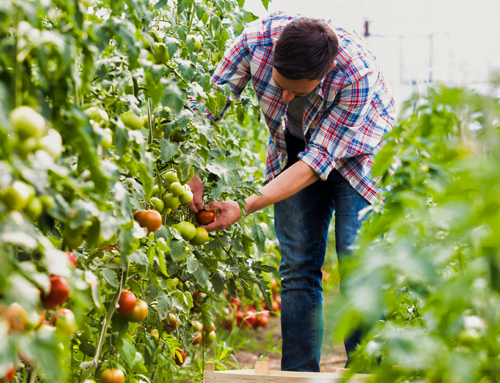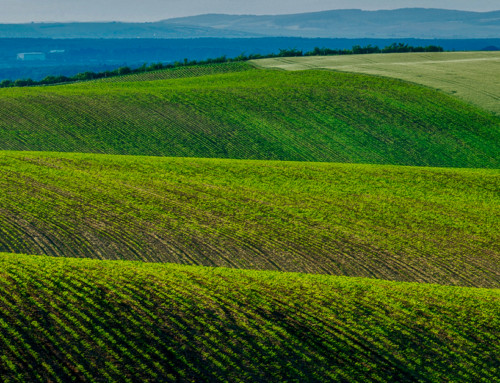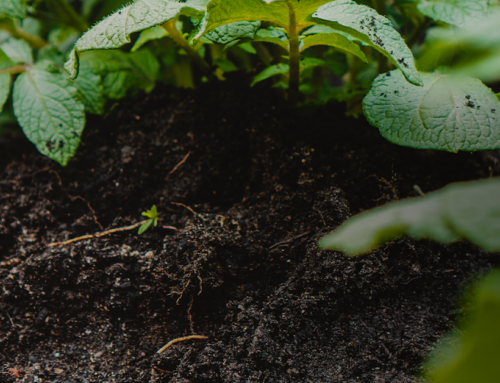Climate change has been a cause of nightmares for a lot of people. What was once a distant problem, is now becoming closer with each day. Most people can already feel the effects of the climate crisis, such as increasing temperatures, extreme weather events, food insecurity, water scarcity, sea-level rise, and much more. But there is no need to fall in despair. As the UN’s Secretary-General António Guterres pointed out, “the climate emergency is a race we are losing, but it is a race we can win”. And soil biodiversity will help us win.
Although reducing greenhouse gas (GHG) emissions is essential in fighting climate change, it might not be enough anymore.
Since 1751 humankind has emitted over 1.5 trillion tonnes of CO2 to the atmosphere and it is estimated that between 15% to 40% of all anthropogenic CO2 will remain in the atmosphere for approximately a thousand years. Hence it is important to not only put a stop to GHG emissions but to also remove carbon from the atmosphere.
But how can we capture carbon? There are already technologies such as bioengineering solutions that might get the job done. These techniques are gaining popularity around the world; however, they face some disadvantages such as being region-specific and cost–ineffective.
Lucky for us, nature might have another solution to our problems. It is an incredible technology that’s cost-efficient and can be applied virtually anywhere. That natural technology is soil and its microorganisms!
Not many people know this, but soil biodiversity plays a major role in climate change adaptation and mitigation. Soil organisms can either contribute to the emission of GHG or aid the absorption of carbon into the soil. How it functions depends on the soil’s condition. These organisms have a direct role in the carbon cycle, given that carbon in soil is recycled by microorganisms within the soil food web.
Soil biota fixate carbon into soil through its activities, e.g. by transforming animal and plant debris. Some autotrophic bacteria and archaea can also take CO2 directly from the atmosphere and fixate that into the soil. But there is also another way in which soil organisms store carbon.
Plants absorb CO2 from the atmosphere during photosynthesis and transform it into carbon– rich compounds. About 40% of these compounds are released into the soil by plant roots to feed fungi and other soil organisms. As the fungi grow it continues to absorb compounds provided by plants, storing more and more carbon within itself. As a result, this carbon will stay stored in the soil for hundreds of years.
This phenomenon is known as soil carbon sequestration.
Soil is one of the main global reservoirs of biodiversity, and not surprisingly, it also has the largest carbon stock on earth – approximately 1500 Gt of carbon at least. This amount surpasses the carbon content of the atmosphere and vegetation put together.
Carbon is naturally found in the atmosphere and in the soil, but the balance of its cycle has been disrupted by human activities, as we put more carbon in the atmosphere and store less. The conversion of natural ecosystems to agricultural use for example, has already released 50 to 100 GT of carbon from soil into the atmosphere, therefore, soil biodiversity is a key instrument to restore the lost balance.
It is estimated that only 1% of soil microorganisms species are currently known in contrast to 80% of plant species. Although we know soil biota is essential in fighting climate change, we still have a lot to learn about these organisms, as stated in the recent Food and Agriculture Organization of the United Nations’ report State of Knowledge of Soil Biodiversity:
“The ways we manage our land and soil, and its biodiversity, have the potential to have a profound influence at a local, regional and global scale. The relationship between climate change and soil biodiversity is complex. We are only beginning to scratch the surface of understanding the connections, feedbacks, threats and opportunities posed by the interactions.”
We have a long way to go if we want to build a greener and more prosperous world, but there is still time. Soil biodiversity is already doing a great job at helping us store carbon, but if we want to end the climate emergency, we need to make sure these organisms are protected.
There are innumerous ways in which we can help, whether you are an individual or a large corporation. In each of these cases, we should take different, but equally important responsibilities for protecting our planet and its biodiversity. Nature has been pointing us in the right direction, we just have to listen and help her do what she does best: regenerate and find balance.
Below there are some other articles that you might be interested in:







Leave A Comment